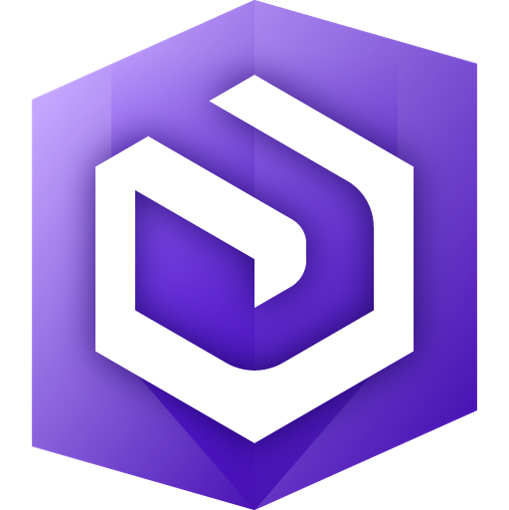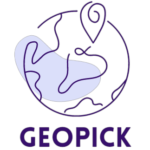
GeoPick
This e-learning platform “GeoPick” designed to help learners navigate the world of web cartography. The main focus is on helping learners choose the most suitable JavaScript mapping API for their project, and we provide a comprehensive comparison table of popular APIs such as ArcGIS JavaScript API, Google Maps API, and Leaflet.
JavaScript mapping APIs:
Learn about ArcGIS Maps SDK for JS, Google Maps API, and Leaflet

ArcGIS JavaScript API
The ArcGIS JavaScript API is a powerful tool for creating interactive maps and data visualizations. Developed by Esri, it offers a wide range of features for developers, including support for 3D mapping and geocoding. The API also includes a comprehensive set of tools for working with data, such as querying and filtering.

Google Maps API
The Google Maps API is one of the most popular mapping APIs available. It’s used by millions of websites to display maps and location-based information. The API offers a wide range of features, including support for street view, directions, and real-time traffic updates.

Leaflet
Leaflet is an open-source JavaScript library for creating mobile-friendly maps. It’s lightweight and easy to use, making it a popular choice for developers who want to quickly add maps to their websites. Despite its simplicity, Leaflet offers a wide range of features, including support for custom markers, popups, and tile layers.
Learn · Compare · Succeed
GeoPick
Feature Comparison Table:
Explore Different Features of JS mapping API. Which API Should You Choose for Your Mapping Needs?

Compare the Top JavaScript Mapping APIs
This page serves as a table of contents for the comparison tables of the most popular JavaScript mapping APIs – ArcGIS Maps SDK for JS, Google Maps API, and Leaflet. It provides an overview of what readers can expect to find in the comparison tables, including an in-depth analysis of various features and functionalities of each API.

Introduction to JS Mapping APIs: ArcGIS, Google Maps, and Leaflet
This page offers a general overview of the three most widely used JavaScript mapping APIs – ArcGIS Maps SDK for JS, Google Maps API, and Leaflet. It includes recommendations for choosing the right API and a brief summary of the advantages and disadvantages of each API.

Comparison of JS Mapping APIs Based on Features
This page offers a comprehensive comparison table of different JavaScript mapping APIs based on various features such as ease of use, customization options, ability to handle large datasets, and community engagement. It helps readers to find the best fit for their specific needs. The following three web pages provide a more detailed technical analysis of each API and are part of the Comparison of JS Mapping APIs Based on Features overview.

Data Format Coverage Comparison
This page provides a detailed comparison table of different JavaScript mapping APIs based on their data format coverage (GeoJSON, XML, WMS, etc.). It helps developers select the most suitable API for their project based on the type of data they are working with.

Interaction Data Comparison
This page provides a comparison table of different JavaScript mapping APIs that focuses on their interaction methods, including pan, zoom, user interfaces, measuring, and other relevant functionalities. It allows readers to compare the features and capabilities of each API easily and quickly.

Representation Methods Comparison
This page provides a comparison table of different JavaScript mapping APIs that focuses on their representation methods, including 2D/3D maps, image overlays, and other relevant functionalities. It allows readers to compare the features and capabilities of each API easily and quickly.
Tutorials for JS Mapping APIs:
Learn How to Create Interactive Maps with ArcGIS Maps SDK for JS, Google Maps API, and Leaflet.
Level 1: Map Creation and Manipulation
The first level tutorial takes learners through a step-by-step tutorial on how to use each mapping API for a specific case in Kyrgyzstan. Learners will explore tourist sights such as Bishkek City, Burana Tower, Issyk-Kul Lake, Osh City, Saimaluu Tash, Sary-Chelek, Jengish Chokusu, Tashrabat, and Canyon Skazka. The main focus of this lesson is to guide learners on how to view maps, add markers with popup, and change base maps.
Level 2: Real-Time Mapping Techniques
The second level tutorial builds on the previous lessons and educates learners on how to work with real time data, specifically clustering earthquakes in Kyrgyzstan. Learners will learn how to use the cluster method from thematic web mapping, work with GeoJSON files and work with cartographic elements on the web map.
Level 3: Complex Data Visualization
The final tutorial lesson teaches learners how to create an animation map. Based on the knowledge acquired from the previous lessons, learners will learn how to animate earthquake markers with popup information. By the end of this tutorial section, learners will have gained a comprehensive understanding of web mapping with the ArcGIS Maps SDK for JS, Google Maps API, and Leaflet.


